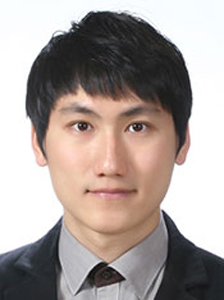Program Information
Utilizing CT Dual DFOV in Treatment Planning System
HyunSeok Lee1,2,3*, Jung-in Kim2,3,4,5, Wonmo Sung1,2,3, Jong In Park1,2,3, Sung-Joon Ye1,4,5, (1) Program in Biomedical Radiation Sciences, Department of Transdisciplinary Studies, Graduate School of Convergence Science and Technology, Seoul National University, Seoul, Korea, (2) Biomedical Research Institute, Seoul National University Hospital, Seoul, Korea,(3) Institute of Radiation Medicine, Seoul National University Medical Research Center, Seoul, Korea,(4) Interdisciplinary Program in Radiation Applied Life Science, Seoul National University College of Medicine, Seoul, Korea, (5) Department of Radiation Oncology, Seoul National University Hospital, Seoul, Korea,
SU-E-J-99 Sunday 3:00PM - 6:00PM Room: Exhibit HallPurpose: Typically, a Display Field of View (DFOV) parameter is set to accommodate the wide part of anatomy in the scan, which is the shoulder in head and neck (HN) cases. The dual DFOV can make use of two image resolutions in one CT set. However, the Eclipse™ treatment planning system (TPS) accepts only the larger DFOV when reconstructing the body volume and thus particularly reduces in-plane resolution of the head region. In this study, we developed a method to preserve the original resolution of head CT images.
Methods: The anthromorphic phantom was scanned from head to shoulder using the GE LightSpeed RT16 CT by applying small and large DFOV to head and shoulder region, respectively. Our in-house software enables dual DFOV CT images to be entered into Eclipse™ TPS. Basically, the software converts the pixel size of head CT images from 512 x 512 to 1024 x 1024 by expanding the DFOV outside.
Results: The original and processed CT sets were loaded by Eclipse™ TPS and the differences were analyzed. Processed CT images showed two times better resolution than original CT images in head region. Distinguishing target and OAR in processed CT images is also clearer than before. We also confirmed that the mean percentage difference of CT numbers before and after processing was negligible for total phantom volume of the head region except steep gradient region which CT number changes drastically.
Conclusion: The advantage of dual DFOV images was fully taken in the Eclipse™ TPS. In treatment planning, defining target and organ at risk which is the most important part for accurate treatment can be improved using high resolution dual DFOV CT images.
Contact Email:


